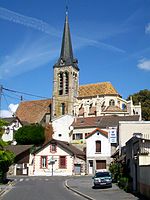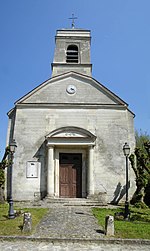Goussainville, Val-d'Oise

Goussainville (French pronunciation: [ɡusɛ̃vil] ) is a commune in the department of Val-d'Oise, northern France. It is located 20.6 km (12.8 mi) north-northeast from the centre of Paris, near Charles de Gaulle Airport. Goussainville is part of the urban unit (agglomeration) of Paris.Goussainville was the site of the crash of the supersonic Tupolev Tu-144 during the 1973 Paris Air Show which led to the deaths of all six people on board and eight more on the ground and is less than 6 km from Gonesse, the site of the crash of the supersonic Concorde operating as Air France Flight 4590 on 25 July 2000. In 1974, a year after the deadly Tupolev Tu-144 crash, Charles de Gaulle Airport opened—putting the small commune directly in the flight path of the busy airport. The constant noise was a major disturbance and acted as a "constant reminder of the deadly crash."
Excerpt from the Wikipedia article Goussainville, Val-d'Oise (License: CC BY-SA 3.0, Authors, Images).Goussainville, Val-d'Oise
Rue Étienne Dolet, Sarcelles
Geographical coordinates (GPS) Address Nearby Places Show on map
Geographical coordinates (GPS)
| Latitude | Longitude |
|---|---|
| N 49.0325 ° | E 2.4747 ° |
Address
Rue Étienne Dolet
Rue Étienne Dolet
95190 Sarcelles
Ile-de-France, France
Open on Google Maps








